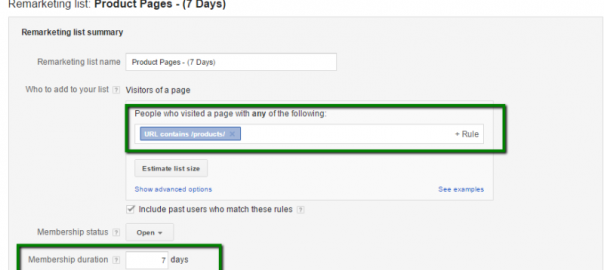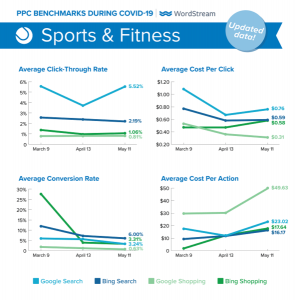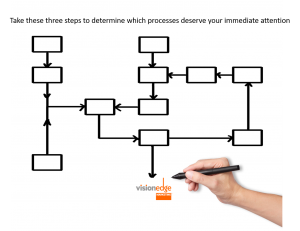A lot has been said about how to best structure search and shopping campaigns, but what about remarketing campaigns? Columnist Susan Waldes discusses her formula for successful remarketing campaign structure.

Last fall, I had a great time participating in “The Great PPC Account Structure Debate” at SMX East. And I loved reading how the debate shook down recently with a different panel at SMX West.
You don’t have to have attended one of those sessions, though, to know that paid search people are passionate and vocal about their preferred account structure approaches. From speaker panels to articles to white papers, you could drown in the amount of information on structuring search campaigns (and shopping campaigns).
If the well is overflowing on how to best structure “query-based” campaign types, it’s comparatively dry for another important campaign type: remarketing.
In the last couple of months, I’ve built two different remarketing campaigns where the initial couple of days of performance data was not looking good. In both cases, I was so confident in the setup of those campaigns that I knew that something was wrong with either the website or the conversion tracking.
In both cases, I discovered that I was correct: the remarketing campaigns were working, but there were cart issues in one case and conversion tracking issues in the other.
The reason I had that level of confidence is that I always structure my remarketing campaigns with the same approach: the 4 Cs.
About the 4 Cs
The 4 Cs stand for content, cookie duration, creative and context. They each provide an indication of the “value” of a return visit from a prospect. Therefore, each C or combination of Cs lives in its own ad group, with a bid that addresses the hierarchical value of that visit.
Before we get any further into the structure stuff, let’s dig into the Cs and why each matters.
Content: This is the area of your site that somebody has visited. You don’t need to segment every page of your site here with its own audience and ad group. You want to create audiences that are grouped by the likelihood to convert.
For an e-commerce site, you might target four main content-based audiences: people who have been to home, category pages, product pages and the cart. Similar segmentation can be done for Lead Gen, depending on your product and site architecture; people who have started a form or been to your pricing page likely have a much higher chance of converting than those who have only been to your home page.
Cookie Duration: For most sites, recent visitors have a higher likelihood of converting than less recent visitors. The right cookie durations to use for your remarketing audiences will depend on your product and funnel. Just as with the content, you don’t need to break out every single day since visit into its own audience; you want to create groupings that have similar expected conversion rates. As a basic rule, I most often use two-day, seven-day and 30-day cookie durations on my audiences.
Creative: Refers to the type of ad that you are serving to your audience. You might want to target your seven-day cart abandoner audiences with dynamic display ads, static banner ads and text ads. If that’s the case, you should have three unique ad groups: one with only dynamic display ads, one with only static banner ads and one with only text ads.
The reason we segment by creative is, again, varying performance expectations. Each ad type has its own set of expected behavior in terms of click-through and conversion rates. Your static banners might have higher CTRs than your text ads because they are visually attractive, but lower conversion rates because they don’t contain as much information. Your text ads might have low CTRs and great conversion rates because all that text prequalifies the click more effectively. To bid appropriately in each scenario, each creative type should be broken into its own ad group.
Context: Context refers to the placements on which your ad is appearing. Context is a strong signal of intent and readiness to move down the funnel; a person is much more likely to convert to a B2B software lead when they are browsing software-related content than they are when they are checking the weather.
From a practical level, context layers can be added via keywords, topics or placements. It’s important to segment your ad groups by high contextual relevance and low contextual relevance so you can bid appropriately to each target.
Building 4 C remarketing campaigns
Content and Cookie Duration are applied when you create your remarketing audiences. In my e-commerce example, I’d want to create four different content segments (home, category, product, cart) and three different cookie durations (30-day, seven-day and two-day) for 12 total audiences.
Content is defined in the “people who visited a page with the following” section. Cookie duration is defined in the “membership duration” section. Make sure to name your audiences in a way that makes them easy to define and work with later.

Now that I have my 12 audience segments, I create 12 ad groups and apply one audience to each ad group.
Next, we want to duplicate these groups for each type of creative I’ll be using. For this e-commerce client, we’ll be using text ads, image ads (banners) and dynamic display ads. I clone my initial 12 ad groups for the three types of creative, naming each appropriately. I now have 36 ad groups: four content segments X three cookie duration segments X three creative types.

After I apply the creative units to each respective ad group, I clone everything one more time to add a contextual layer. That contextual layer might consist of a topic category or categories, contextual keywords or a list of placements.
When choosing contextual targets, remember that this is a remarketing campaign. You already know this person is somewhat interested in what you offer; you are just applying a contextual layer that indicates they are more likely to convert.
So for this example, an athletic shoe retailer, if I were creating a regular Display network campaign, I might target a very narrow topic of “Shopping>Apparel>Footwear>Athletic Shoes.” However, within my remarketing campaign, my contextual layer could be much more broad.
I would choose the whole topic category of “Shopping” and “Fitness.” If this person has been to my site and is in “shopping mode” or thinking about “fitness,” they are more likely to convert versus when they are reading business news or checking the weather.

Bidding to the 4 Cs
We created 72 ad groups with 72 different combinations of targeting and creative so that we can bid precisely on each one. The value of a click from a two-day cart abandoner on topical content can easily be 20x or more the value of a 30-day home page visitor.
Start with a base bid on everything. Then filter your ad groups and increase it for each more targeted audience. Your seven-day ad groups might get +50%, your two-day +100%, your product pages +80%, your cart abandons +150%, your topical content +50%.
You’ll end up with a hierarchical tiered bidding system. For my example client, my bids start at a $.60 CPC on a 30-day home page audience and go up to $12.22 CPC on my two-day cart abandons on topical content.
If you have data within prior remarketing campaigns or Google analytics, this bid hierarchy can be very data-driven, and the bids can directly correlate to the conversion rates that are presented in your data.
That said, don’t be afraid of just guesstimating. You can adjust your bids as the data comes in, and ultimately, our goal is actually to utilize the 5th C, Conversion Optimizer.
The 5th C: Conversion Optimizer
Once you have reached the 15-conversion threshold on your remarketing campaign, switch your bidding to a CPA (or ROAS) target.
When Google takes over the bidding, you have created a foundation of hierarchical conversion rates that each can be automatically bid to the right level. In addition, you allow Google to layer in additional factors like device, geography and browser to determine precise CPCs based on the value of each impression.
It’s a precise and well-oiled remarketing machine that will bid appropriately to each user segment and their value to your company.
The 4 Cs are about control
The 4 Cs are not the only factors that determine a successful remarketing campaign. Your device strategy, impression caps, negative audiences, creative strategy, even your product itself, will determine how well remarketing works for you and how large you can scale a remarketing program.
However, this campaign structure will provide a foundation that you can count on, and that gives you the control to optimize effectively.
Think of it like the precision campaign approaches that you use for your keyword search campaigns. Advertisers often isolate their highest-value head terms as exact match keywords in very precisely targeted ad groups with high precise bids and supplement that with lower bid, less precision broader match keywords in other campaigns or ad groups.
Structuring your remarketing campaigns with the 4 Cs gives you that same level of control, predictability and precision on your remarketing campaigns.
C is for Cookie (and Content, and Creative, and Context, and Conversion Optimizer, and Campaign Control)! Now get cooking with Cs!
[Article on Search Engine Land.]
Some opinions expressed in this article may be those of a guest author and not necessarily Marketing Land. Staff authors are listed here.
(Some images used under license from Shutterstock.com.)
Marketing Land – Internet Marketing News, Strategies & Tips
(83)
Report Post









